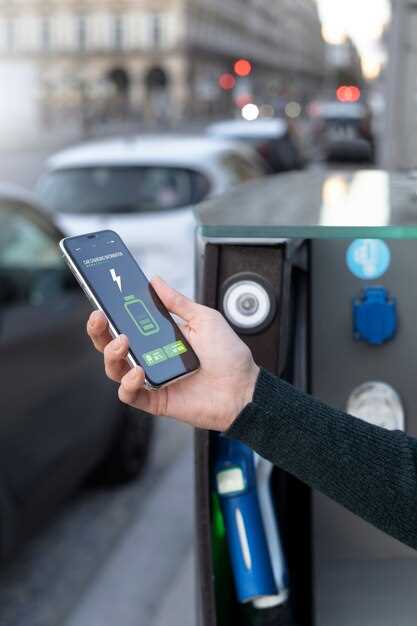
The rise of electric vehicles (EV) has prompted a significant transformation in transportation infrastructure. As the demand for sustainable and eco-friendly transportation solutions grows, the need for a robust infrastructure to support EV charging becomes increasingly critical. Understanding this infrastructure is essential for governments, businesses, and consumers alike to navigate the evolving landscape of electric mobility.
In this article, we will delve into the key components that constitute effective charging infrastructure for electric vehicles. We will explore various charging options available, from home charging stations to public fast chargers, and examine the implications each option has on usability and accessibility. By leveraging insights into the current state of charging networks, stakeholders can make informed decisions that facilitate the adoption of EVs and support the transition towards a greener future.
Moreover, we will analyze the challenges and opportunities associated with expanding charging infrastructure. Issues such as interoperability, grid management, and investment in charging stations will be highlighted, alongside innovative solutions that are emerging in the marketplace. A comprehensive understanding of these factors is crucial for ensuring that the transition to electric vehicles is both effective and sustainable.
Factors Influencing EV Charger Location and Availability

Several factors play a crucial role in determining the optimal location and availability of EV chargers. One significant aspect is the proximity to high-traffic areas. Chargers positioned near shopping centers, restaurants, and entertainment venues witness higher usage, accommodating the needs of EV users who prefer charging while they run errands.
The density of electric vehicle ownership in a region also impacts charger placement. Areas with a high concentration of EVs necessitate more charging stations to meet demand. Urban environments typically require more frequent charging infrastructure due to the popularity of electric vehicles among city dwellers.
Another vital factor is the accessibility of electrical supply. Locations with sufficient electrical grid capacity can support multiple chargers without overloading the system. This is particularly relevant for fast chargers, which demand higher power levels and connection reliability.
Local regulations and incentives significantly influence charging infrastructure development. Governments may require certain standards for installation or offer tax credits for businesses that install EV chargers. These policies often encourage private investment, thereby increasing the number and availability of charging stations.
Safety and security considerations cannot be overlooked. Locations with good lighting, surveillance, and visibility are more attractive for EV owners. Ensuring a safe environment can enhance user confidence in utilizing public charging stations.
Finally, the presence of charging networks and partnerships among businesses, governments, and utility companies can streamline the installation and operation of charging stations. Collaborative efforts often lead to a more comprehensive charging network, increasing the availability of EV chargers across various locations.
Understanding Different Types of EV Chargers: Benefits and Limitations

Electric vehicle (EV) charging infrastructure is essential for the widespread adoption of electric mobility. Various types of chargers cater to distinct needs and scenarios, each with its own set of benefits and limitations.
Level 1 Chargers are the most basic form of charging, usually utilizing a standard household outlet (120V). These chargers are ideal for home use, allowing EV owners to charge their vehicles overnight. The benefits include low installation costs and simplicity of use. However, the major limitation is the slow charging speed, which typically adds only about 5 miles of range per hour, making them less suitable for long trips.
Level 2 Chargers offer a significant improvement in charging speed, operating at 240V. These chargers can be found in public charging stations and are commonly installed at homes. The primary advantage is their ability to recharge an EV in several hours, providing around 25 miles of range per hour. However, the installation costs can be higher, requiring electrical upgrades in some cases. Moreover, access to Level 2 chargers can be limited in certain areas.
DC Fast Chargers are the fastest option available, delivering high voltage (usually 480V) to recharge EVs quickly. These chargers can typically charge a vehicle to 80% in 30 minutes, making them ideal for highway travel and quick stops. The key benefit is the rapid charging time, allowing for minimal downtime. However, the infrastructure for DC fast charging can be expensive to install and maintain, which may deter widespread deployment.
Wireless Chargers represent the latest technological advancement in EV charging. This method allows for charging without physical connectors, using magnetic resonance or inductive charging. The main advantage of wireless charging is convenience, as it eliminates the need for plugging and unplugging cables. However, efficiency loss during the transfer and higher installation costs currently limit their practicality.
Understanding these various types of EV chargers, along with their benefits and limitations, is essential for developing effective EV infrastructure. As technology advances, the landscape of charging solutions will continue to evolve, further supporting the growth of electric vehicles on our roads.
Evaluating Investment Opportunities in EV Charging Networks
The rapid growth of electric vehicle (EV) adoption presents a significant opportunity for investment in charging infrastructure. As governments implement stricter emissions regulations and consumers increasingly prioritize sustainable transportation, the demand for robust charging networks is surging. Evaluating investment opportunities in EV charging networks requires a thorough understanding of market dynamics, technological advancements, and potential returns.
Market Analysis: Assessing the current landscape is crucial for identifying viable investment prospects. This involves analyzing EV sales forecasts, regional charging needs, and the competitive landscape of existing charging providers. Regions with ambitious EV deployment targets often emerge as hotspots for investment, especially where charging stations are currently limited.
Infrastructure Development: Investing in EV charging networks entails considering the types of chargers to deploy, ranging from fast chargers to level 2 stations. Fast chargers cater to high-traffic locations, while level 2 chargers can be strategically placed in residential areas and workplaces. Understanding the optimum charging mix is essential to maximize usage and customer satisfaction.
Partnership Opportunities: Collaborating with existing stakeholders, such as local governments, commercial establishments, and electricity providers, can enhance the viability of investment. These partnerships can facilitate access to prime locations and potentially secure grants or subsidies, further de-risking the investment.
Technology Trends: Keeping abreast of innovations in charging technology, such as wireless charging and smart grid integration, can provide a competitive edge. Investments in emerging technologies may yield higher returns as they increase efficiency and reduce operational costs.
Regulatory Considerations: Understanding the regulatory framework is vital. Government incentives and subsidies can significantly affect the cost structure and profitability of charging networks. Moreover, compliance with safety and installation regulations must be prioritized to avoid legal pitfalls.
Financial Projections: A comprehensive financial model should include revenue streams from charging fees, potential advertising revenue, and partnerships. Evaluating the payback period and return on investment (ROI) will help determine the feasibility of entering the market.
Ultimately, the investment in EV charging networks represents not just a financial opportunity but also a step towards a sustainable future. Careful analysis and strategic planning are essential to capitalize on this growing sector effectively.

